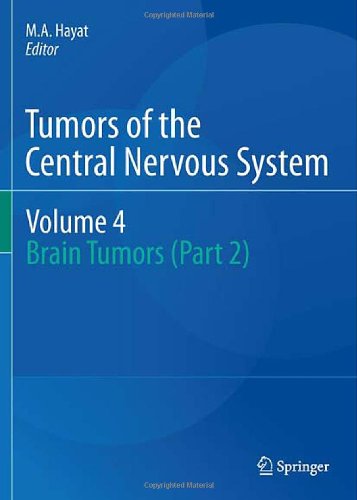

Most ebook files are in PDF format, so you can easily read them using various software such as Foxit Reader or directly on the Google Chrome browser.
Some ebook files are released by publishers in other formats such as .awz, .mobi, .epub, .fb2, etc. You may need to install specific software to read these formats on mobile/PC, such as Calibre.
Please read the tutorial at this link: https://ebookbell.com/faq
We offer FREE conversion to the popular formats you request; however, this may take some time. Therefore, right after payment, please email us, and we will try to provide the service as quickly as possible.
For some exceptional file formats or broken links (if any), please refrain from opening any disputes. Instead, email us first, and we will try to assist within a maximum of 6 hours.
EbookBell Team

4.1
80 reviewsThis volume mainly contains information on the diagnosis, therapy, and prognosis of brain tumors. Insights on the understanding of molecular pathways involved in tumor biology are explained, which should lead to the development of effective drugs. Information on pathways (e.g., hedgehog) facilitates targeted therapies in cancer. Tumor models are also presented, which utilize expression data, pathway sensitivity, and genetic abnormalities, representing targets in cancer. For example, rat model of malignant brain tumors using implantation of doxorubicin with drug eluting beads for delivery is explained. The future of pathway-driven therapies for tumors is summarized. The importance of personalizing cancer care is emphasized. The need for supportive measures for survivors of brain cancer is pointed out, so is the quality of life monitoring. The need of rehabilitation therapy for patients with primary and metastatic brain tumors is also emphasized. Role of MicroRNA in distinguishing primary tumors from metastatic primary tumors is discussed. Advantages and limitations of chemotherapy (e.g., temozolomide and doxorubicin) are discussed. The complexity of tumor to tumor transfer is explained; examples discussed are: brain metastases from breast cancer and brain metastases fro non-small cell lung carcinoma. Identification and characterization of biomarkers, including those for metastatic brain tumors, are presented. Genomic analysis for identifying clinically relevant subtypes of glioblastoma is included. A large number of imaging modalities are detailed to study progression and invasion of gliomas